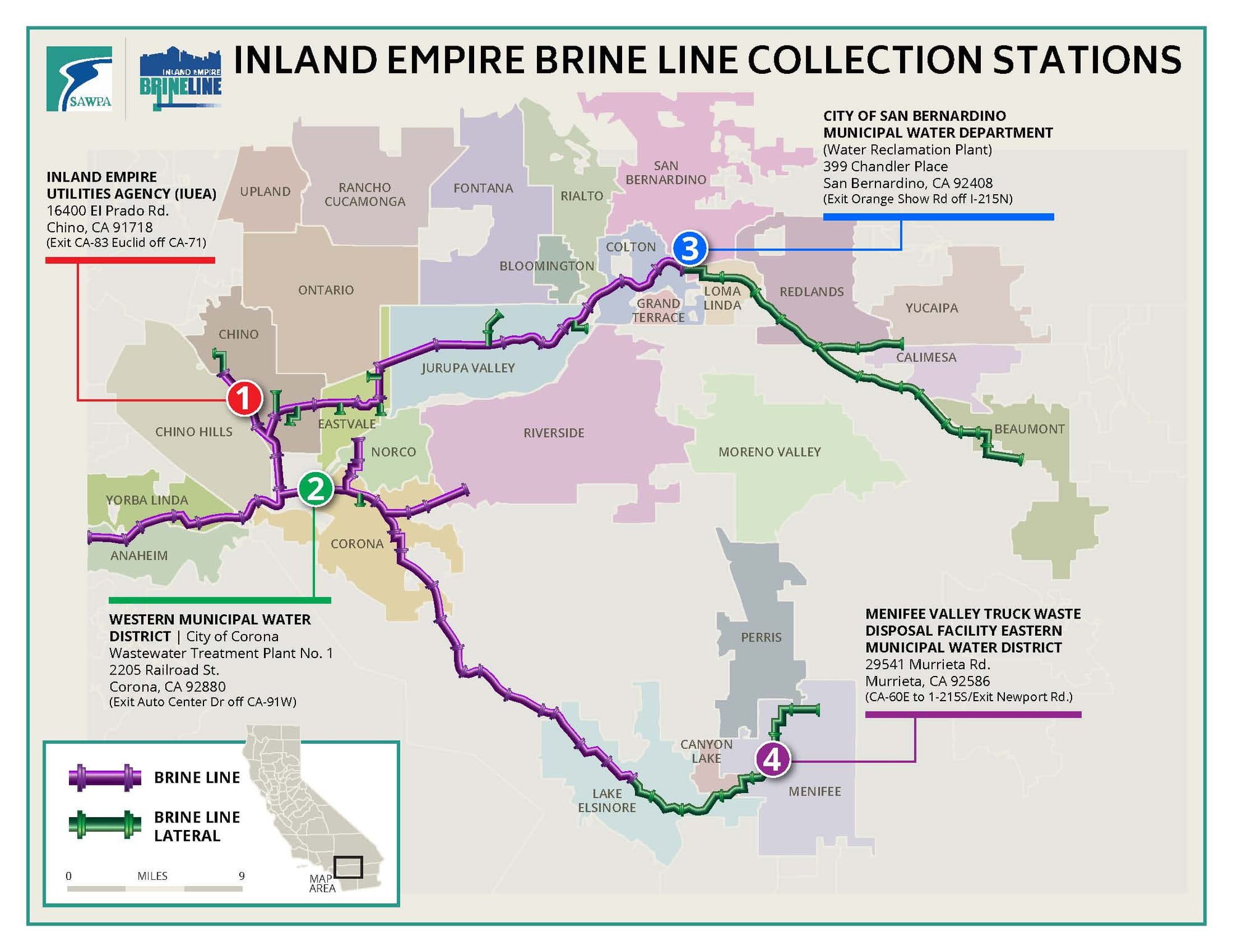Coffee Shop Goes to the Dogs (In the Best Way)
This new Riverside spot serves up lattes with a side of puppy love.
The Inland Empire Brine Line manages salty water disposal, processing half a million pounds of salt daily to protect the Santa Ana River and support local industries.

The Inland Empire Brine Line is a pipeline network used to dispose of water that is too salty to flow to the Santa Ana River. It serves much of the Inland Empire and currently disposes of half a million pounds of salt daily. The brine line has both direct connections with dischargers and locations where small dischargers can dispose of brine by truck. The map below shows the brine line and truck disposal locations.

The collected brine and a very small percentage of domestic sewage are delivered to the Orange County Sanitation District for treatment before discharge to the ocean. The brine delivered to the ocean is less salty than the ocean itself but saltier than is allowed in the Santa Ana River or drinking water. Discharges to the brine line and from the Orange County Sanitation District treatment facility are monitored to ensure regulatory compliance.
The brine line has a physical capacity of 30 million gallons per day. Currently, it operates at a maximum of about 17 million gallons per day because that is the capacity available at the Orange County Sanitation District treatment facility. This facility will be expanded as demand increases to the 30 million gallons per day limit. In the interim, additional flow can be accommodated by constructing brine storage at discharge sites or along the brine line to store brine during high flow periods and release it during lower flow periods.
The brine line contributes to water quality by removing salts that otherwise would impact water quality in the Santa Ana River and our groundwater basins, allows more efficient use of water in industrial processes where water is reused several times before being discharged, and supports the local economy by providing industries a means to dispose of their brine without the prohibitive cost of trucking it out of the region. The brine line also allows the production of potable water from local groundwater basins that have too much salt for use without treatment. This is less expensive and more reliable than imported water.
Currently, the brine entering the brine line comes from the following broad categories:
Potable water production (desalters) 74%
Industrial processes 12%
Wastewater desalting (reduce salts to acceptable levels) 7%
Power generation 4%
Domestic 2%
The brine line is sometimes called the Santa Ana Regional Interceptor, or SARI. The Santa Ana Watershed Project Authority, or SAWPA owns, operates, and maintains it. SAWPA is a joint powers authority composed of the Western Municipal Water District, the Eastern Municipal Water District, the San Bernardino Valley Municipal Water District, the Inland Empire Utilities Agency, and the Orange County Water District. You can find more information at: https://SAWPA.gov/inland-empire-brine-line/
Let us email you Riverside's news and events every Sunday, Monday, Wednesday, and Friday morning. For free